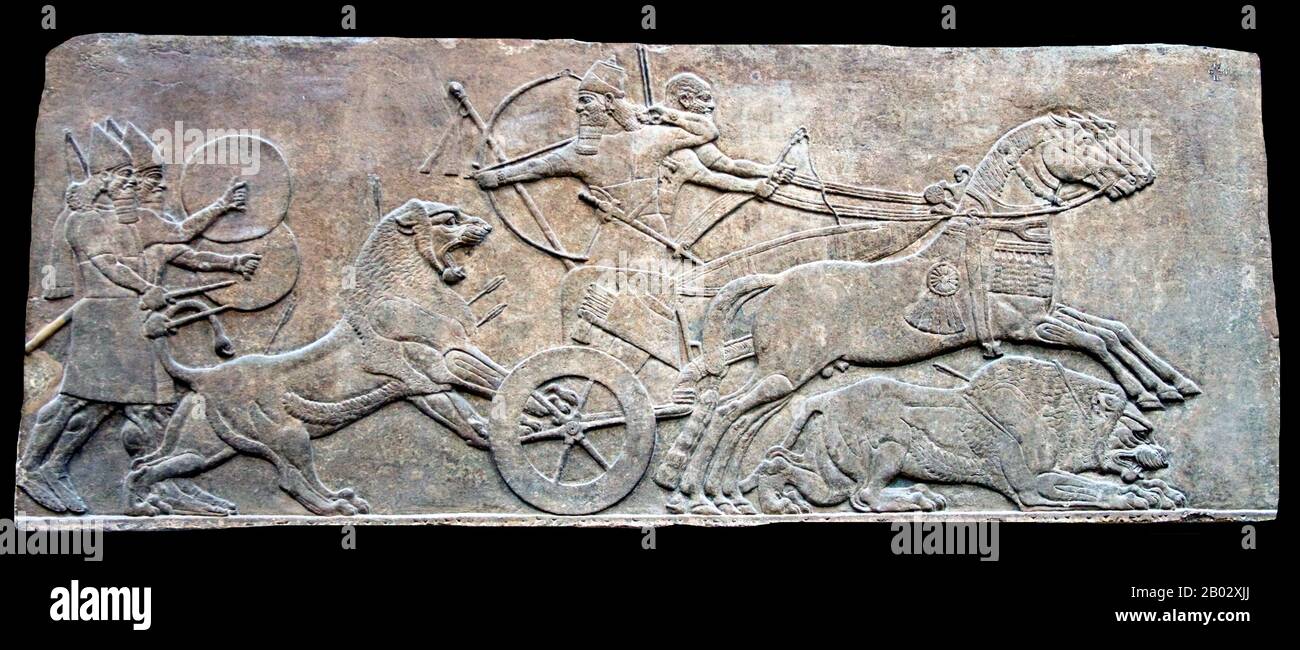Nineveh (Akkadian: Ninua) is an ancient Mesopotamian city on the eastern bank of the Tigris River, and capital of the Neo-Assyrian Empire. It was the largest city in the world for some fifty years until, after a bitter period of civil war in Assyria itself, it was sacked by an unusual coalition of former subject peoples, the Babylonians, Medes, Persians, Chaldeans, Scythians and Cimmerians in 612 BCE. Its ruins are across the river from the modern-day major city of Mosul, in the Ninawa Governorate of Iraq. In early 2015 the jihadist group ISIL (Islamic State in Iraq and the Levant) announced

Image details
Contributor:
CPA Media Pte Ltd / Alamy Stock PhotoImage ID:
2B02XJJFile size:
52.1 MB (2.6 MB Compressed download)Releases:
Model - no | Property - noDo I need a release?Dimensions:
6500 x 2803 px | 55 x 23.7 cm | 21.7 x 9.3 inches | 300dpiDate taken:
4 June 2010Photographer:
Pictures From HistoryMore information:
This image could have imperfections as it’s either historical or reportage.
Nineveh (Akkadian: Ninua) is an ancient Mesopotamian city on the eastern bank of the Tigris River, and capital of the Neo-Assyrian Empire. It was the largest city in the world for some fifty years until, after a bitter period of civil war in Assyria itself, it was sacked by an unusual coalition of former subject peoples, the Babylonians, Medes, Persians, Chaldeans, Scythians and Cimmerians in 612 BCE. Its ruins are across the river from the modern-day major city of Mosul, in the Ninawa Governorate of Iraq. In early 2015 the jihadist group ISIL (Islamic State in Iraq and the Levant) announced their intention to destroy the walls of Nineveh if the Iraqis try to liberate the city, they also threatened to destroy artifacts. On February 26 they destroyed several items and statues in the Mosul Museum, and are believed to have plundered others to sell overseas. The items were mostly from the Assyrian exhibit, which ISIL declared blasphemous and idolatrous.